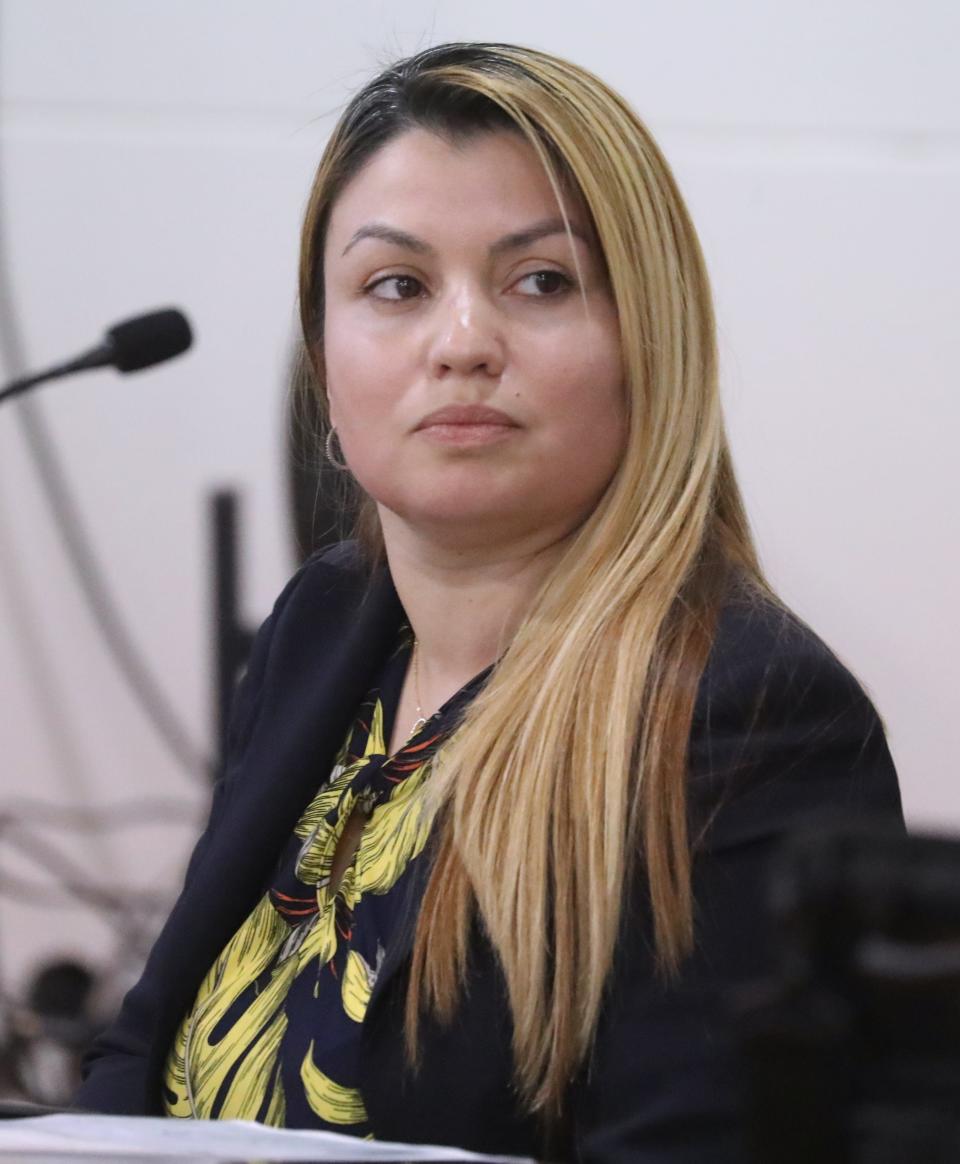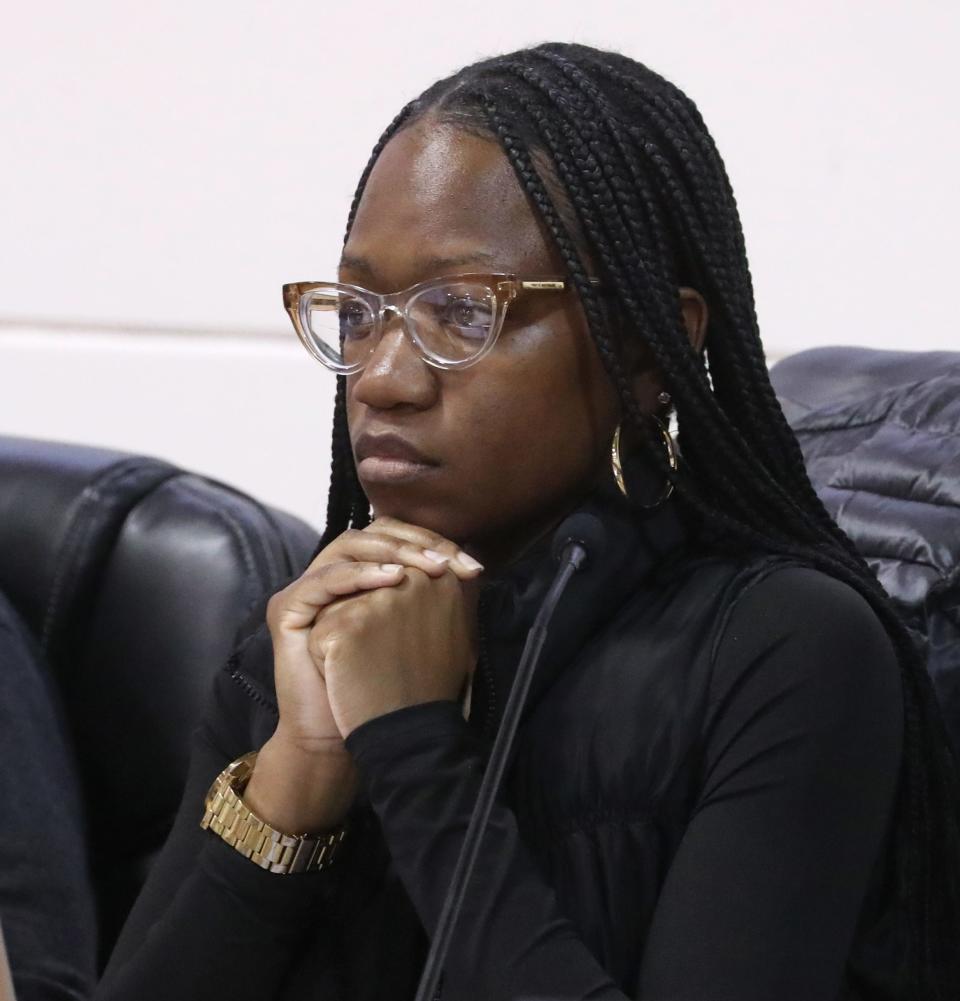East Ramapo busing stays amid swelling deficit as trustee shifts focus to homeless kids
SPRING VALLEY - The fiscal and cultural strains in East Ramapo were laid bare during a March 5 school board meeting, as a contingent of state Education Department officials looked on.
Although state Education Commissioner Betty Rosa was not present, her staff was, including former East Ramapo acting Superintendent Ray Giamartino, who now oversees state-appointed monitors in the district as assistant commissioner of the Office of Innovation and School Reform.
Speakers still had words for Rosa. They implored her to act. They also made clear they would hold her accountable. "She promised justice," longtime school activist Luis Nivelo said. He said that public-school families were ready to protest weekly in front of Rosa's home in Tappan.
"Ms. Betty Rosa is an accomplice," he said.
Inflection points included:
Public-school families accusing trustees of not caring about children of color.
A board member blaming the district's record number of homeless students for its fiscal stress.
The school board, as suggested by state-appointed monitors, tabling an attempt to curtail the district's elaborate and expensive universal transportation system, one of the biggest cost-drivers for a looming deficit.
Board members also backed putting up a $246 million bond to fix schools in dilapidated conditions, even after tens of millions of dollars of federal COVID funding was invested in repairs.
In a sign of the dire conditions of district buildings, the board agreed to dip into limited district funds for emergency repairs at three buildings. "Severely deteriorated conditions" were found in steel I-beam columns supporting canopies at the entrance of Fleetwood, Grandview and Fleetwood elementary schools. The damage was not mentioned in a July 2023 Building Conditions Survey that failed every single school in the district.
A district divided
East Ramapo serves more than 40,000 children, a quarter of whom attend public schools.
The overwhelming majority of 10,409 public-school students are children of color. While about 54% are new immigrants and English language learners, many more students live in households where English is not the primary language spoken and need language support.
Some 30,000 kids who live in East Ramapo's borders attend private schools, mostly yeshivas that serve the Orthodox and Hasidic Jewish families.
The majority of school board members are men who are seen in the public school community as favoring yeshiva students' needs.
The district's continuously tenuous fiscal condition is fed by repeated rejections of budget plans by voters if any tax hike is included. The property tax levy has been functionally frozen by voters for around a decade.
State-appointed monitors have been present in the district for several years, and have been granted further oversight power as economic and educational conditions worsen.
A budget gamble, a built-in deficit
The monitors are pushing the board to put up a budget plan that raises property taxes up to the tax cap of 5.38%.
Even if that budget plan is passed by voters, the district still faces a multi-million-dollar deficit next year. While an approved budget would bring in an estimated $316.8 million of revenue, anticipated expenses, even before the year starts, are at $336.2 million. That $19.2 million hole is built in, before unexpected costs occur.
The board must adopt a budget proposal by April 16.
Regents in East Ramapo: Chancellor tells public-school parents: 'Hold us accountable'
The district is down key personnel, including in its facilities department. The district's transportation director was fired in January. Natalie Espinal, assistant superintendent of business, has been overseeing transportation as she works on budget planning. Espinal was hired this week by South Orangetown as assistant superintendent for business and operations.

It was against that backdrop that a trustee who represents Monsey-based Ward 5 cast doubt on the district's homeless numbers and implied a portion of the district's fiscal problems stemmed from those children.
Homeless students
About 14.8% of East Ramapo's public school students, or 1,547, are considered homeless, according to recent statistics shared by the district. That's more than any other in the Lower Hudson Valley and tops even NYC's estimated 11% reported at the beginning of the 2023-2024 school year.
During a March 5 school board meeting, the revelation prompted Trustee Yitzchok Gruber to question why the district's numbers are so high.
"Why in the world do we have to pay $40 million," Gruber asked. He posited that families were hiding their residences in nearby districts.
"Obviously East Ramapo does a much better job educating those kids than the neighboring districts," Gruber said. "Otherwise why are they coming here?"
Spring Valley has long been a new immigrant community; crossings over the Southern border have brought Central and South Americans, as well as Haitians, to join established communities there. The impact has been reflected in the number of students enrolling in the district, sometimes up to 100 a week. The overwhelming number of enrollees qualify for English Language Learning programs.
The "homeless student" definition is set in the federal McKinney-Vento Homeless Assistance Act of 1987. Students are classified as homeless if they or their families live in a shelter or other temporary placement like a motel; have no stable home and are "couch surfing" in overcrowded and sometimes dangerous situations; or are living outside.
Gruber said school buses are picking up kids from outside the districts' boundaries. Under McKinney-Vento, a student who lived in East Ramapo but is placed in a temporary shelter outside the district remains an East Ramapo student.
Trustee Sabrina Charles-Pierre pointed out that around two dozen students still remain in temporary housing, including motels around the county, after a Feb. 25 fire at a large apartment complex on Slinn Avenue in the village.

While at this meeting Gruber questioned the district spending funds on homeless students, he warned at a Feb. 15 meeting that any attempts to cut universal busing would result in his Monsey-based Ward 6 constituents tanking the budget plan.
"Don't even think about it," he said.
Carole Anderson, a former school board member who attends most meetings, was in the audience at both meetings to hear Gruber's warnings that his ward wouldn't pass a budget if they lost any access to busing, as well as his questions about whether the district was truly responsible for many homeless public-school students.
"It is highly offensive," Anderson said.
The Wesley Hills resident questioned if Gruber's statements were a violation of his oath of office. "You are supposed to be working in the best interests of all the children of the district."
Busing cuts tabled
Transportation costs keep soaring but residents have no appetite for cutting back offerings to help boost the deficit-strained budget. Projections put the cost for next year's transportation at $76 million, which would eat up a fifth of operating costs.
That's because the district offers universal busing — with trips that aren't fully reimbursed by the state — and pays high prices for a complex web of vendors transporting kids to scores of private schools. The district's transit system is the most complex in the state, excluding NYC schools.
East Ramapo: Monitors seek transportation cuts as banks refuse to lend money to district
According district calculations, up to $12 million a year could be saved by restricting busing to state-mandated parameters. The state reimburses transportation costs for student trips at or over 2 miles for grades K-8 and 3 miles for grades 9-12.
For both the public- and private-school community, busing cuts are a concern.
The district's roads are heavily congested and many areas lack sidewalks. Infrastructure has not kept up with traffic growth. If more kids were walking to school, and more parents driving their children, conditions could be even worse.
Two children were killed by their school buses in the last few weeks in the district, a tragedy East Ramapo schools Superintendent Clarence Ellis called gut-wrenching.
He acknowledged the concerns within both the public- and private-school communities.
Ellis said he understands why universal busing was instituted decades ago, pointing to a lack of sidewalks and infrastructure problems in the area. But everything must be on the table. "We're in such dire financial straits ... we have to include it."
Charles-Pierre, whose child attends East Ramapo public schools, said a safety study should be done.
As trustees made clear their concerns about safety, state-appointed fiscal monitor Bruce Singer suggested the board table the resolution to cut back universal busing.
Nancy Cutler writes about People & Policy for lohud.com and the USA Today Network New York. Reach her at ncutler@lohud.com; follow her at @nancyrockland on X (formerly Twitter), Instagram and Threads.
This article originally appeared on Rockland/Westchester Journal News: East Ramapo NY tension grows with public school and yeshiva community

